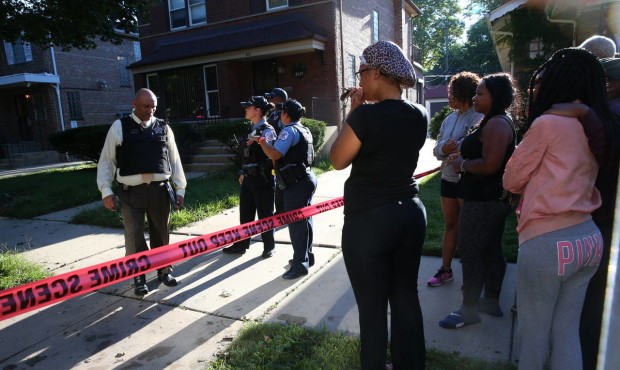Uncategorized
Staggering number of reduced-priced ORCA cards being swiped
 A recent survey found that 42 percent of riders have taken the bus and light rail more frequently since receiving the ORCA LIFT card. (Eric Mandel/MyNorthwest)
A recent survey found that 42 percent of riders have taken the bus and light rail more frequently since receiving the ORCA LIFT card. (Eric Mandel/MyNorthwest)
With the First Hill streetcar finally rolling along and the U-Link extension opening in less than a week, an ORCA pass can be more useful than ever before. Additionally, a new wave of discounted ORCA cards is increasingly being used to help low-income individuals use public transit around the state.
While all these extra options take people off the roads and provide a significant public benefit, how do the changes impact the bottom line?
“It’s too early to tell,” says Matt Hansen, director of customer communications and services at King County Metro. “But that will be part of our evaluation of the program, to learn what happened. Nobody knew what was going to happen when we started it.”
Related: Getting to U-District will get easier way sooner than expected
Reloadable ORCA cards are accepted on Community Transit, Everett Transit, King County Metro Transit, Kitsap Transit, Pierce Transit, Sound Transit, and Washington State Ferries. The card costs $5 and can be loaded with between $5 and $300. There is also an unlimited monthly pass with various costs. Businesses can also buy Passport plans, which provide unlimited access no matter the mode of transportation.
Then there is King County’s ORCA LIFT, the nation’s largest reduced-fare program for lower-income riders, which launched a year ago. The number of qualified riders using ORCA LIFT cards has increased each month since the program started. More than 3.7 million trips were taken with ORCA LIFT cards on Metro buses and Sound Transit Link light rail during the program’s first year, with more than 25,000 King County residents signed up for the program.
King County Executive Dow Constantine recently announced the cards can now be used on all Sound Transit ST Express buses and Sounder trains, covering King, Snohomish, and Pierce counties. Metro Transit also started a new program, LIFT Kids, that waives the $5 purchase fee for an ORCA card for the children of LIFT participants.
The program has gained attention in other metropolitan regions, such as Boston and Charlotte, N.C., as an example of how regional governments can increase access to opportunity.
“The success of ORCA LIFT shows the rest of the country how transit can be part of the solution to our nation’s growing income inequality,” Executive Constantine said. “By helping more people get to that higher-paying job or college class, we are helping passengers climb the ladder of success.”
Transit costs include payment to Vix Technology, which operates the ORCA cards, transaction fees for credit cards used, plus all the actual operating costs. The King County Council gives guidance and financial policy. Twenty-five percent of costs are covered at the farebox, with 75 percent subsidized by taxes, plus federal and state grants.
“Right now we’re covering more than 25 percent, but over time, our costs will go up and then at some point, in order to achieve that target … we’ll need to raise the fare,” Hansen said.
ORCA LIFT eliminates the $5 card fee and sets a flat $1.50 on rides. That means, for a ride that typically costs $2.75, the county forgoes $1.25 in revenue for the “social revenue” of allowing the person to access public transit at a lower rate, Hansen says.
But the math is really nowhere near that simple.
A recent survey found that 42 percent of riders have taken the bus and light rail more frequently since receiving the ORCA LIFT card. That means money where there otherwise wouldn’t be any.
And then there’s another important cost to consider: time.
Hansen says part of the calculations that need to be figured are savings on reduced dwelling times in bus zones — when people who used to pay cash fumbled with their change and slowed the bus down, versus those same people now boarding with a tap, meaning the bus gets moving again faster.
“We have 1,500 busses that stop at over 10,000 bus zones, and if we get everybody on ORCA we’re going to save a lot of money,” he said. “I would predict that would be a very big number if we didn’t spend so much time sitting in bus zones waiting for people to pay cash. And I would say that number would be far, far greater than anything we lose in lost revenue due to LIFT.”
Of course, there’s also the humanitarian element to consider. Hansen says the people who process income verification for ORCA LIFT have relayed stories of people who need to choose between food and getting to work.
“Single parent struggling to feed their kids has to choose between food and work and the cost of transit is that big of an impact on how they manage their lives,” Hansen said. “That causes a lot of stress. Is that what we want to be in these people’s lives? And I think that’s the question that was being asked by the Executive and the council.”
The county made another deliberate move in that regard, attempting to eliminate some of the work it takes to actually access public assistance, which often has varying timelines and requirements. Hansen says LIFT is valid for two years no matter what, even if the user “ages out” — i.e. gets a better job and no longer needs assistance. He says it’s the kind thing to do, and also, might actually be a money-saver.
“There are things that you can do that are beneficial to the people you are supposed to serve, and, frankly, reduce our costs,” he said. “Because it costs money to verify people, distribute cards.”




































Comments